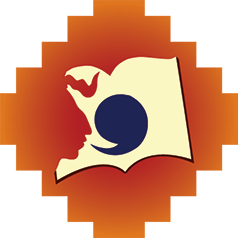A Library for Wonder: New Tools Inspire New Questions
At Na’atik, we believe that learning doesn't stop at the edge of a page. Our library has always been a place to read and dream, and now thanks to the generous donations to our recent library fundraiser it’s becoming something more: a space to explore, experiment, create music, and even examine our own bones. With a handful of exciting new additions, the Na’atik library is transforming into a hands-on hub of discovery.
Recently, our shelves made room for some unexpected newcomers: a full set of ukuleles, a working microscope, an interactive globe, and perhaps the most eye-catching of all, a life-sized human skeleton. These tools may seem like an unusual mix, but to our librarian, Sophia, they all support the same idea: that a great library inspires curiosity about the world, both outside and inside ourselves.
Learning Beyond the Page
Sophia explains, “I want the library to be about more than just reading. It’s about being curious, asking questions and wondering how things work, how our bodies move, how sound is made, where we are in the world.” This vision has led to a series of workshops and open learning moments that invite students to use their bodies, their senses, and their imaginations.
One recent series, Body and Balance, invited students to explore the science behind how we stand, walk, and even balance on a slackline suspended a few feet above the ground. They learned about the sensory systems that help us maintain balance: the liquid in our inner ears, our vision, and proprioception our body’s awareness of where it is in space. The skeleton will now play a key role in connecting those lessons to our physical structure. “I’m excited to use the skeleton in future workshops,” says Sophia. “Students can actually see the bones they rely on to stay upright on the slackline. It helps them visualize what’s going on beneath the surface.”
And yes, students are absolutely encouraged to touch the skeleton. Sophia wants them to observe how the joints move, where the different bones are, and how they connect. It’s much more than just a display piece.
Sound and Strings: Music in the Library
Another big hit? The new ukuleles. They’re already bringing music and joy into the space, with both structured workshops and moments of spontaneous creativity. Students are learning basic chords in special music classes, and the instruments are available during library hours for independent play. One student, Ximena, recently sat down in the reading area and practiced for a full 30 minutes, exploring the chords she had just learned in class.
These moments are exactly what the English team hopes to encourage: self-directed learning, creative expression, and a sense of ownership over the space. The ukuleles don’t live behind a locked cabinet—they’re right there in the library, ready to be picked up and strummed whenever the library is open and staffed.
Open Access, Open Minds
That same spirit of accessibility applies to all the new materials. Whether it’s peering into the microscope, spinning the globe, or testing the movement of a femur on the skeleton, students are welcome to explore independently during library hours. No reservations are required. The goal is to invite curiosity—and to let students follow it wherever it leads.
The new globe, for example, has drawn in many curious hands. In addition to showing countries and continents, it also labels the great ocean currents. And when plugged in during evening classes, it illuminates some common constellations, giving our budding astronomers a head start before heading outside to see the stars for themselves.
A Community Effort
These updates haven’t just changed what’s in the library—they’ve changed how the space feels. The kids themselves helped set up the new round tables and chairs, which are designed to support collaboration and group projects. “It’s part of building the library as a nontraditional learning space,” Sophia explains. “We learn more when we’re working together, asking questions, and being curious—not just about books, but about everything around and inside of us.”
And that’s the heart of this transformation. The new tools in the library aren’t just equipment. They’re invitations—to wonder, to tinker, to strum, to study, and to connect. They encourage students to take ownership of their learning and remind us all that curiosity is the first step toward knowledge.
As more students pick up ukuleles, peek through the microscope, or learn how our inner ears help us balance, we see Na’atik’s mission in action: inspiring young minds to go deeper, to question more, and to learn in every direction.
To learn more about Na’atik’s English language program for local and Indigenous students in Felipe Carrillo Puerto, visit ourImpact Page. We are only able to provide this much needed program thanks to the support ofgenerous donors and the funds raised from our award winningMaya and Spanish Immersion Program. If you would like to support our mission please considerdonating today or take a look at ourimmersion programsandonline class packages.





